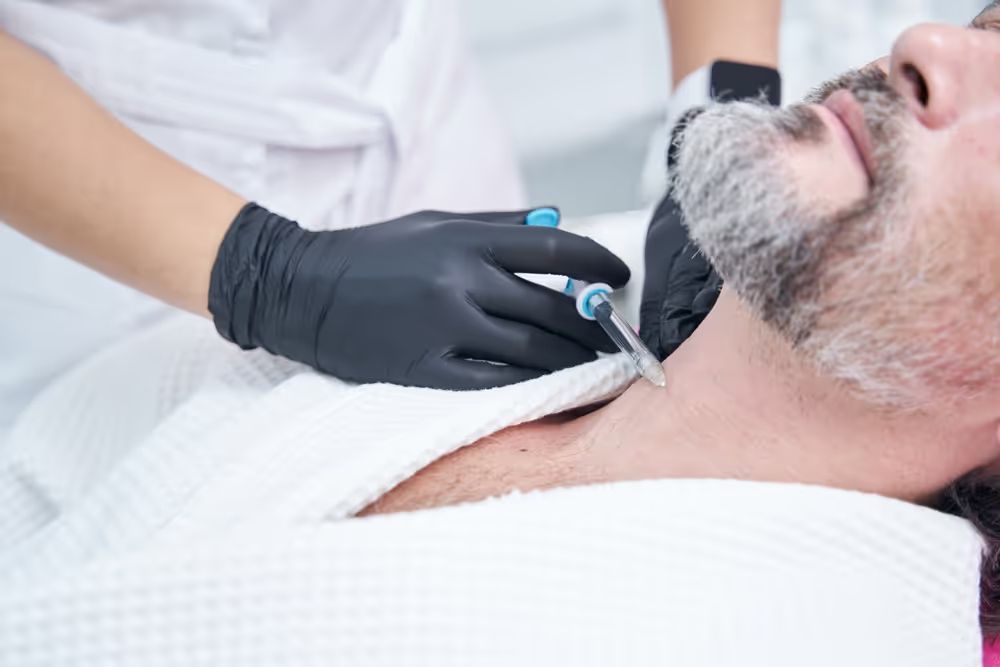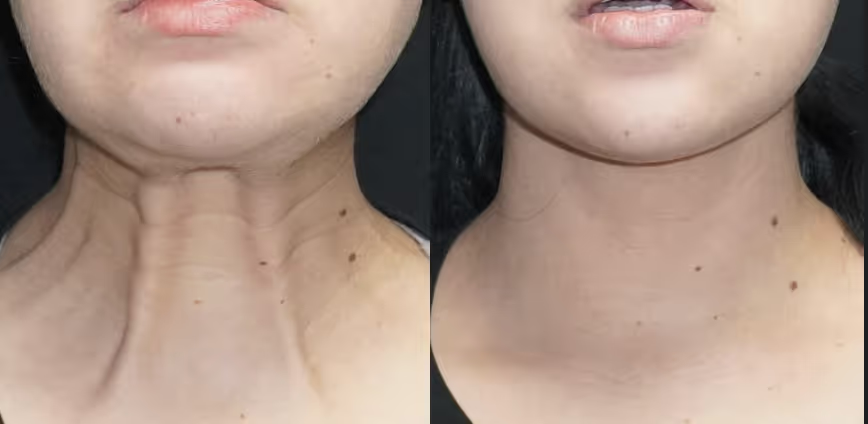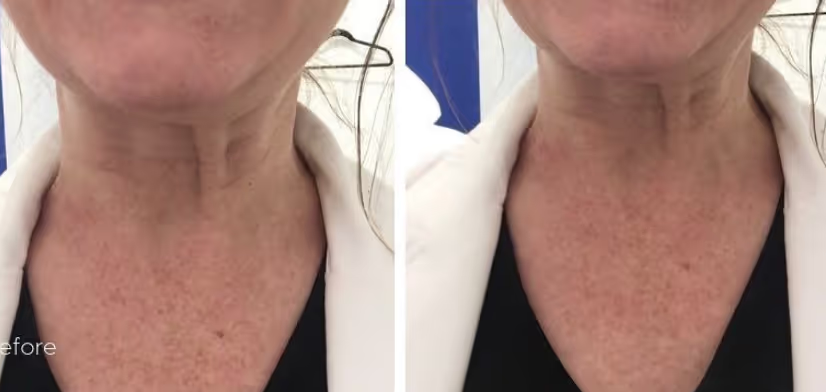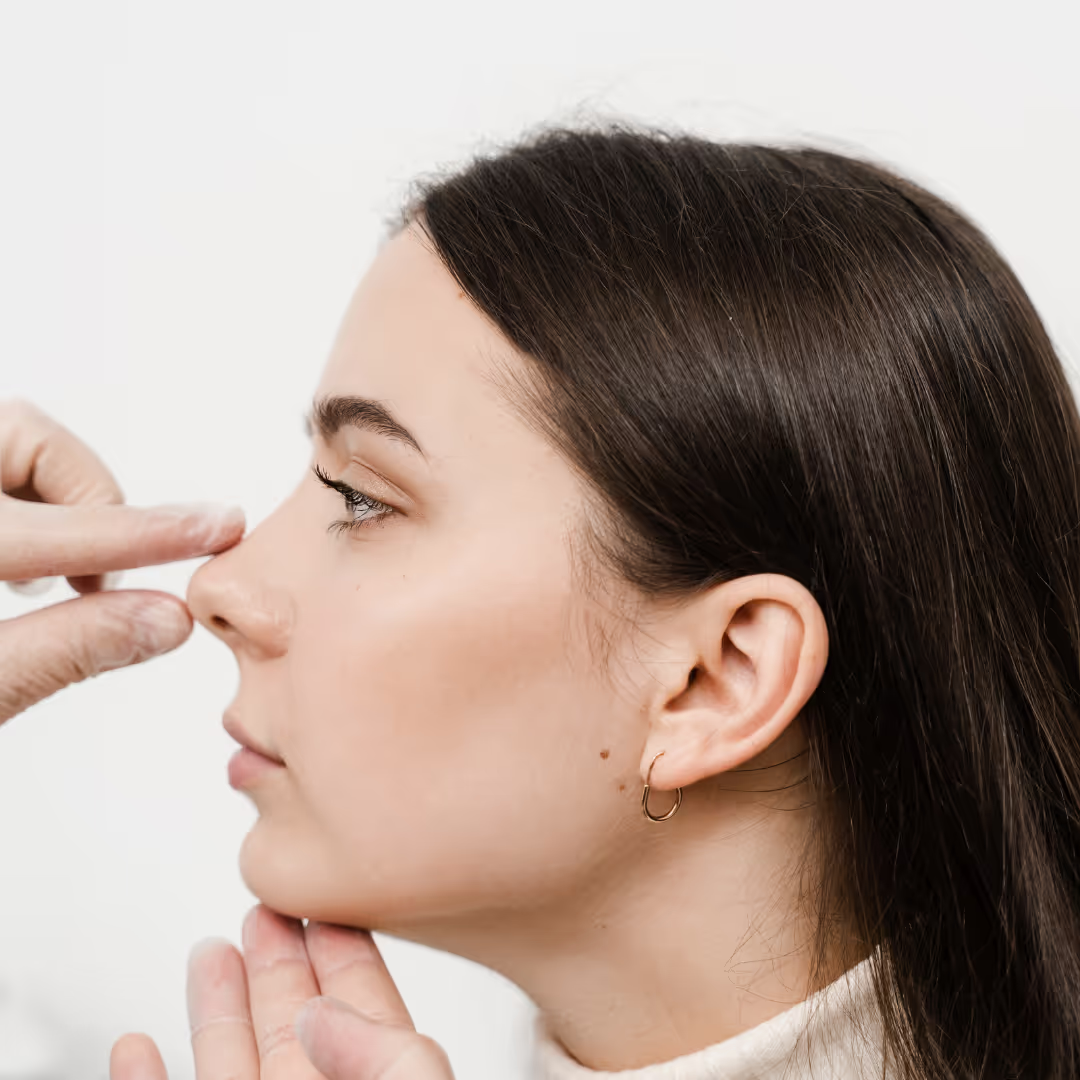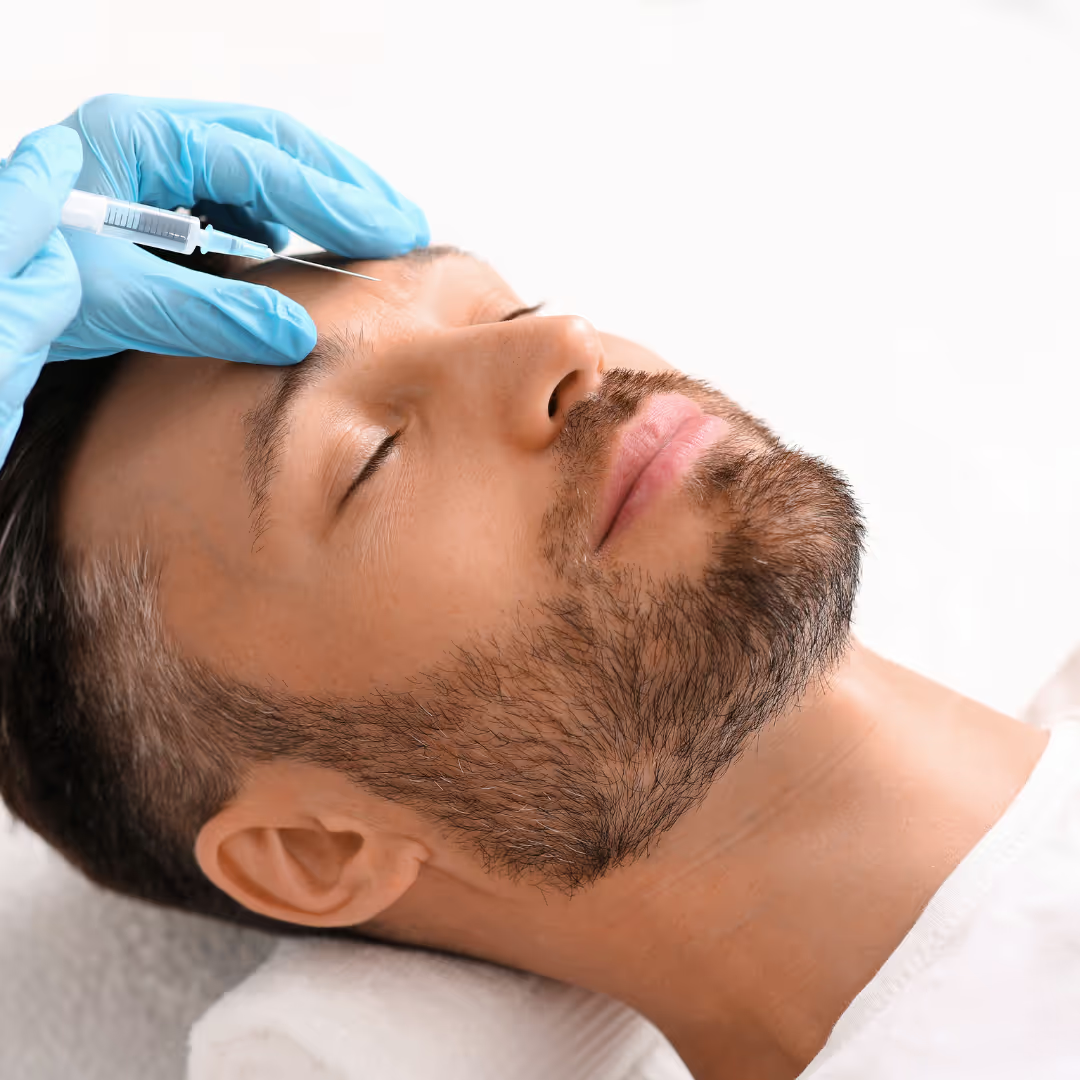Top-Rated Botox For Neck
Give your neck a fresh feel with a visit to our friendly Botox specialists. Experience safe, effective treatments that bring out the best in your appearance.
As low as $7 per unit
You deserve this!

What Can You Expect From Botox For Neck
Botox for the neck is a cosmetic procedure that reduces the appearance of neck lines and wrinkles, giving the face a more youthful appearance. Treatment involves small targeted injections into the neck muscles, which are performed quickly, cause minimal discomfort, and require no downtime. You can immediately return to your daily activities. Results appear within a few days, and the full effect is noticeable in about 2 weeks and lasts up to 4 months. This makes Botox a convenient and effective option for improving the appearance of the neck.

How Does Botox Work for Neck?
Botox works by interfering with the nerve signals that cause muscles to contract, directly affecting the subcutaneous muscles in the neck. When tense, these muscles can form noticeable vertical and horizontal stripes on the neck, leading to aging. When Botox is injected into these muscles, nerve signals are blocked, resulting in decreased muscle activity. As the muscles relax, the skin becomes smoother, and visible lines and wrinkles are significantly reduced.
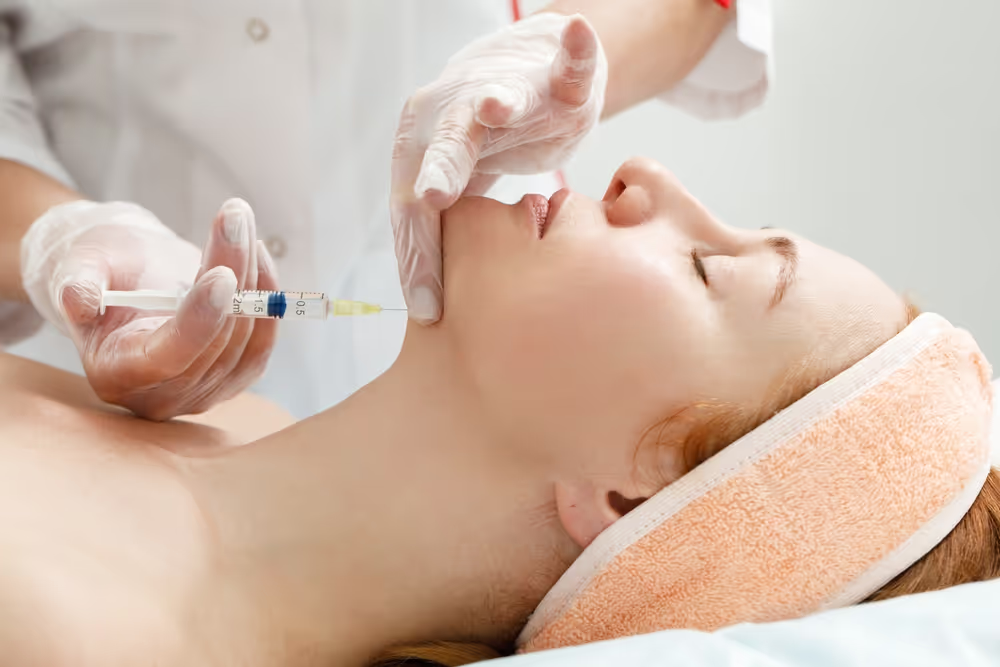
Personalized Botox Injections For Neck For Men and Women
Our personalized neck Botox injections meet all our client’s unique needs and aesthetic goals, regardless of gender. This procedure can help anyone who wants to reduce visible signs of aging in the neck area, such as wrinkles and muscle groups, creating a refreshed appearance.
For those who want to maintain a professional appearance in the workplace, Botox offers a subtle yet effective solution that smooths the neck and gives it a more refined profile. Our experts provide a comfortable experience and deliver results that meet your expectations, helping you look and feel your best.
How Much Botox Can You Apply To Your Neck
The amount of Botox needed for a neck treatment varies depending on the individual and the desired result. Typically, clients may require 25 to 50 units of Botox to treat neck wrinkles effectively. During your initial consultation, our specialists will evaluate the specific areas of your neck that need treatment and adjust the dosage accordingly to ensure optimal results.
Preparation of Botox For Neck
Avoid Using Certain Substances: For about a week before treatment, avoid alcohol, blood thinners, and supplements. These may increase the risk of bruising and bleeding at the injection site.
Stay Hydrated: Drinking plenty of water before your procedure can help keep your skin healthy and promote recovery.
Clean Skin: On the day of your procedure, make sure your neck area is clean and free of makeup, lotions, and other products.
Aftercare of Botox For Neck
Avoid Touching or Massaging Your Neck: For at least 24 hours after treatment, avoid touching or massaging the neck area to prevent Botox from spreading to unwanted muscles.
Maintain an Upright Position: Try to remain upright and not bend or lie for 4 hours after treatment. This helps ensure that the Botox remains localized to the neck.
Cold Compress: If you experience swelling, you can apply a gentle cold compress to the area to reduce it.
The Benefits of Botox Treatment For Neck
Fast Procedure With No Downtime
Treatment occurs quickly, usually taking only a few minutes, and patients can return to their daily activities immediately without needing recovery.
Natural-Looking Results
Botox provides subtle improvements that leave your neck looking younger and fresher without drastic changes. This can increase self-confidence and satisfaction with your appearance.
Preventive Benefits
Regular Botox treatments may also have preventative benefits by reducing the constant strain on neck muscles, potentially slowing the development of new lines and wrinkles.
Botox Treatment Process for Neck
Step 1: Start with a thorough consultation with our qualified specialist. Discuss your concerns, medical history, and desired results. The practitioner will evaluate your neck and determine if Botox suits you.
Step 2: Once you have decided to proceed with Botox on your neck. The area will be cleaned, and a topical numbing cream may be applied to increase comfort during the injections.
Step 3: Once preparation is complete, the practitioner strategically administers Botox injections into specific muscles in the neck area. The procedure usually takes only a few minutes, and discomfort is minimal for most patients.
Step 4: You can resume your normal activities immediately after the injections. However, it is very important to follow all post-treatment instructions your healthcare provider provides.
Before & After
98% CUSTOMER SATISFACTION


Customer Reviews
FAQ
The results of Botox for the neck generally last between 3 to 4 months. The duration can vary depending on individual factors such as metabolism, muscle activity, and the dosage used. Regular maintenance treatments can help sustain the results over time.
The Botox treatment for the neck involves minimal discomfort. Most patients describe the sensation as a small pinch or sting. To enhance comfort, a topical numbing cream or ice may be applied to the area before the injections. Any discomfort experienced during the procedure is usually brief and subsides quickly.
Yes, Botox for the neck can be combined with other cosmetic treatments to enhance overall results. Popular combinations include dermal fillers, skin tightening procedures, and laser treatments. Consult with your provider to create a customized treatment plan that addresses your specific aesthetic goals and needs.
You can expect to see initial results from neck Botox within a few days of the treatment. The full effects typically become visible within one to two weeks as the muscles relax and the skin smooths out, providing a more youthful appearance.
Common side effects of Botox for the neck include mild swelling, redness, or bruising at the injection site, which typically subside within a few days. Serious side effects are rare but can include difficulty swallowing, neck weakness, or an allergic reaction. It is important to discuss your medical history with your provider to minimize risks.


.avif)

